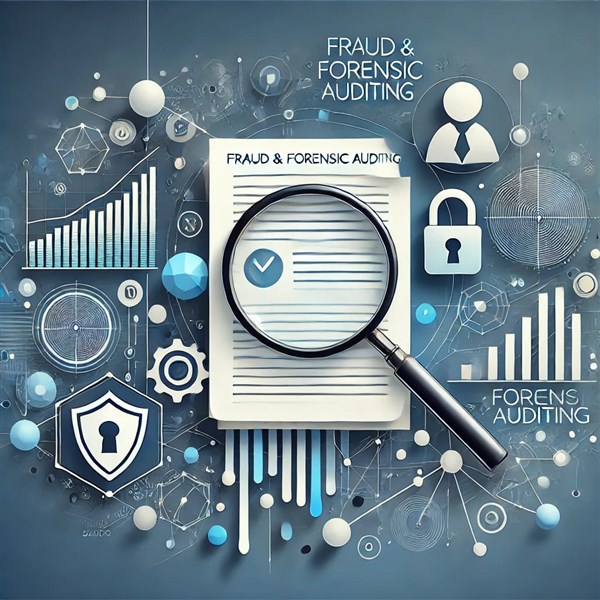
Fraudulent activities within organizations pose a significant threat to both their financial stability and reputation. Detecting and mitigating such activities requires advanced skills, knowledge, and specialized techniques. This is where forensic auditing comes in. Forensic auditors are experts trained to investigate financial discrepancies, identify fraud, and provide actionable insights to prevent future misconduct.
In this article, we’ll explore the top techniques used in fraud and forensic auditing, including data mining, fraud detection software, interviews, and more. These techniques are essential for uncovering fraud and ensuring organizations can maintain financial integrity.
Top Techniques Used in Fraud and Forensic Auditing
1. Data Mining and Analytics
What is Data Mining?
Data mining involves the use of automated tools and algorithms to sift through large datasets, looking for hidden patterns, inconsistencies, and outliers that could indicate fraudulent activities. Forensic auditors use data mining to analyze massive amounts of financial data to identify irregularities that may not be immediately obvious.
How Data Mining Helps in Fraud Detection
Fraud often leaves behind subtle clues, such as unusual patterns in financial transactions or discrepancies in employee spending reports. By using data mining tools, forensic auditors can identify anomalies that trigger further investigation. Some common data mining techniques used in fraud detection include:
- Clustering: Grouping similar data points together to identify unusual patterns in financial transactions.
- Classification: Categorizing data into groups to highlight any data points that stand out as abnormal or suspicious.
- Regression analysis: Identifying relationships between different variables to spot unusual patterns that could suggest fraudulent activities.
The use of data mining helps auditors detect fraud faster and more accurately than manual methods, especially in large organizations with vast amounts of financial data.
2. Fraud Detection Software
What is Fraud Detection Software?
Fraud detection software refers to tools and applications specifically designed to identify signs of fraud in financial data. These tools use machine learning algorithms and artificial intelligence (AI) to analyze transactions, flagging potential fraudulent activity in real-time.
How Fraud Detection Software Works
Fraud detection software typically works by comparing incoming data against pre-established rules and patterns, looking for discrepancies that deviate from normal behavior. For example, if an employee suddenly starts making unusually large purchases or if a series of transactions occur outside of regular business hours, the software will flag these activities for further review.
Some advanced fraud detection systems use AI to learn from historical data, improving their ability to predict fraud over time. These tools are particularly useful for detecting fraud in sectors such as banking, insurance, and retail, where real-time monitoring is essential.
Popular Fraud Detection Tools
- ACL Analytics: Offers advanced data analysis features that allow forensic auditors to examine financial records and transactions for irregularities.
- CaseWare IDEA: A data analytics tool used to extract, analyze, and visualize data in real-time, helping auditors spot fraudulent patterns.
- SAS Fraud Management: A sophisticated fraud detection system that uses AI to analyze transactions and prevent fraud in banking and financial institutions.
3. Forensic Interviews
The Role of Interviews in Fraud Detection
Forensic interviews are a key component of the fraud detection process. While data analysis can reveal patterns and discrepancies, interviews provide an opportunity to gather firsthand information, clarify suspicious findings, and assess the credibility of employees or witnesses.
Forensic auditors conduct interviews to:
- Collect facts: Gather essential details about financial transactions or behavior that appear suspicious.
- Assess motivations: Determine if the individual has any motive for committing fraud.
- Detect inconsistencies: Identify discrepancies between what is reported and the actual events.
Types of Forensic Interviews
Forensic interviews can be broken down into several types, depending on the context and the goals of the investigation:
- Initial Interviews: These are conducted early in the investigation and focus on collecting basic facts, reviewing documentation, and identifying any immediate red flags.
- Interrogation: If a suspect is identified, the forensic auditor may employ interrogation techniques to determine whether they were involved in the fraudulent activity.
- Witness Interviews: These interviews gather third-party insights that could provide context or corroborate suspicions.
The key to a successful forensic interview is preparation. Auditors need to develop a set of questions that are designed to elicit specific, relevant responses while maintaining a neutral and professional tone.
4. Benford’s Law Analysis
What is Benford’s Law?
Benford’s Law is a statistical principle that suggests in many naturally occurring datasets, the first digits of numbers are not uniformly distributed. Instead, smaller digits (especially 1) are more likely to appear as the leading digit. For example, the number 1 will appear as the first digit approximately 30% of the time, while larger digits, like 9, will appear far less frequently.
How Benford’s Law is Used in Forensic Auditing
Forensic auditors use Benford’s Law to detect anomalies in numerical data. Fraudsters may manipulate data to create artificial numbers that do not conform to the expected distribution of first digits. By analyzing financial statements or transactional data with Benford’s Law, auditors can identify suspicious areas that warrant further investigation.
Benford’s Law is particularly effective in detecting manipulation of expenses, invoices, and other financial reports.
5. Document Examination and Digital Forensics
Document Examination
Forensic auditors often examine documents for signs of tampering or forgery. This could include checking for alterations in printed invoices, contracts, receipts, and emails. Using tools like forensic imaging, auditors can analyze documents at a granular level to determine if they have been altered in any way.
Digital Forensics
With the rise of cybercrime and digital fraud, digital forensics has become a critical part of forensic auditing. Digital forensics involves the recovery and analysis of electronic data from computers, servers, and other digital devices. This can include investigating email communication, financial software logs, and even social media platforms for evidence of fraudulent activity.
Digital forensic auditors use tools such as EnCase and FTK (Forensic Toolkit) to capture and examine digital evidence without altering the original data.
6. Background Checks and Financial Profiling
Background Checks
Forensic auditors often perform background checks on employees, suppliers, or contractors involved in suspicious activities. This can help uncover any past criminal behavior, financial difficulties, or other factors that may contribute to fraudulent activity.
Financial Profiling
Financial profiling involves examining the financial history of individuals or entities to look for signs of unusual wealth accumulation or financial behavior. This technique can help identify whether a suspect’s lifestyle aligns with their income, providing clues to potential fraud.
Conclusion
Fraud and forensic auditing techniques are essential tools in the fight against financial fraud. From data mining and fraud detection software to forensic interviews and digital forensics, each technique plays a unique role in uncovering fraudulent activities. By employing a combination of these methods, forensic auditors can effectively investigate financial crimes, identify perpetrators, and provide recommendations for improving internal controls to prevent future fraud.
For businesses and organizations, investing in forensic auditing is not just about identifying fraud—it’s about creating a culture of transparency, accountability, and financial integrity. If you’re interested in protecting your business from fraud, understanding and implementing these techniques is a crucial step toward achieving long-term success.
At Koenig Solutions, we are committed to providing our learners with the most current and comprehensive Fraud and Forensic Auditing training available. Our courses are designed to equip you with the knowledge and skills required to detect, prevent, and investigate fraud in any business environment.







COMMENT